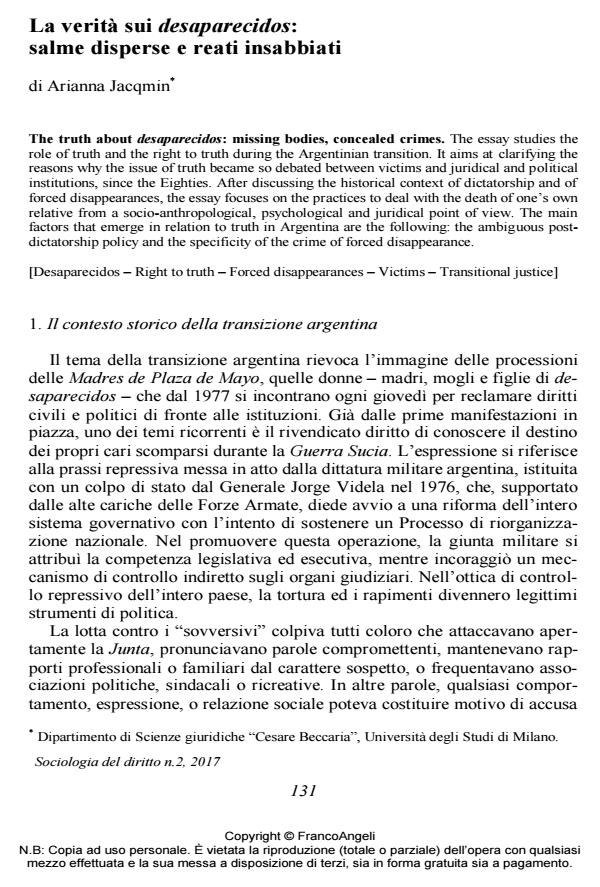La verità sui desaparecidos: salme disperse e reati insabbiati
Titolo Rivista SOCIOLOGIA DEL DIRITTO
Autori/Curatori Arianna Jacqmin
Anno di pubblicazione 2017 Fascicolo 2017/2
Lingua Italiano Numero pagine 22 P. 131-152 Dimensione file 276 KB
DOI 10.3280/SD2017-002006
Il DOI è il codice a barre della proprietà intellettuale: per saperne di più
clicca qui
Qui sotto puoi vedere in anteprima la prima pagina di questo articolo.
Se questo articolo ti interessa, lo puoi acquistare (e scaricare in formato pdf) seguendo le facili indicazioni per acquistare il download credit. Acquista Download Credits per scaricare questo Articolo in formato PDF

FrancoAngeli è membro della Publishers International Linking Association, Inc (PILA)associazione indipendente e non profit per facilitare (attraverso i servizi tecnologici implementati da CrossRef.org) l’accesso degli studiosi ai contenuti digitali nelle pubblicazioni professionali e scientifiche
The essay studies the role of truth and the right to truth during the Argentinian transition. It aims at clarifying the reasons why the issue of truth became so debated between victims and juridical and political institutions, since the Eighties. After discussing the historical context of dictatorship and of forced disappearances, the essay focuses on the practices to deal with the death of one’s own relative from a socio-anthropological, psychological and juridical point of view. The main factors that emerge in relation to truth in Argentina are the following: the ambiguous post-dictatorship policy and the specificity of the crime of forced disappearance.
Parole chiave:Desaparecidos - Right to truth - Forced disappearances - Victims - Transitional justice
Arianna Jacqmin, La verità sui desaparecidos: salme disperse e reati insabbiati in "SOCIOLOGIA DEL DIRITTO " 2/2017, pp 131-152, DOI: 10.3280/SD2017-002006